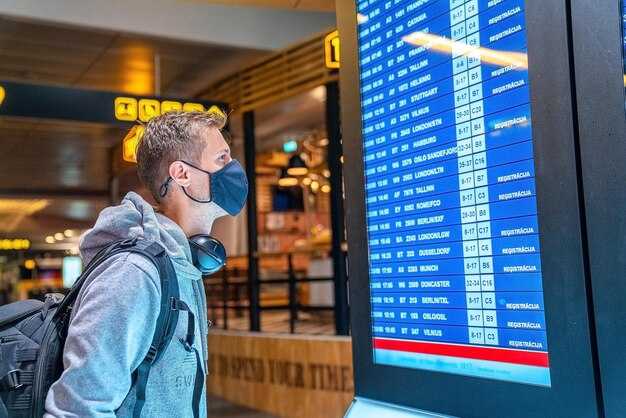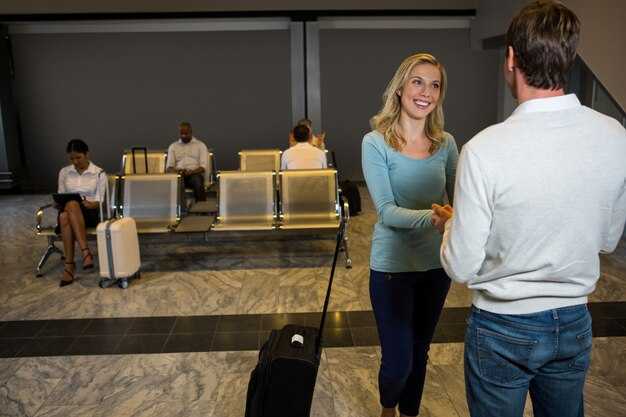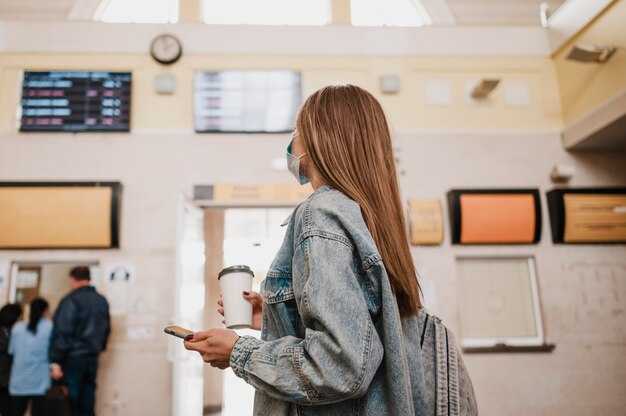
Recommendation: Book a premium taxi at the official desk on arrival to Rome; you’ll get a fixed fare and a quick transfer to the city center, typically around €30–40 depending on traffic. If you prefer a cost saver, app-based transfers and trusted shuttles offer competitive rates and clear pickup points in the arrivals zone.
After you clear baggage, use the arrivals hall to orient yourself: digital boards show the latest gate and baggage info, and a short walk finds currency services and newspaper stands. For real-time updates, load your travel apps and peek into a forum thread where recent travelers share tips about queues and delays at CIA.
Public options to reach central Rome are straightforward. CIA sits southeast of the city, and there is no direct train. The quickest option for many is a bus to Termini or a link via Anagnina Metro Station (Line A) with a single transfer. A typical ride costs a few euros for the bus and about €1.50 for a metro segment, with travel times around 40–60 minutes depending on traffic. Consider throughout the day service windows and note that apps can pinpoint the fastest current route.
For quick departures, arrive at least 2 hours before your flight if you’re checking bags, and use online check-in when possible. In the terminal, keep your boarding pass handy, and head to security with liquids in a clear bag. The premium lounge options, if you have time to spare, offer quiet spaces, newspapers, and power outlets for work or a quick test of your travel setup.
Nearby hotels offer practical stays if you’re catching an early flight or a late arrival. The area has πολυτέλεια options and more budget-friendly smaller properties; many provide throughout stay transit transfers, breakfast inclusions, and reliable shuttle schedules. Check apps to compare rates, read quick questions on a local forum, and reserve in advance.
During your stay, keep a simple ταξίδι checklist: hold onto receipts, confirm pickup times, and know the shortest route to your next event or meeting. Ciampino’s compact layout makes it easy to reach major parts of Rome quickly, and planning ahead helps you avoid unnecessary holds or detours. If you’re curious about current happenings, a quick glance at the newspaper stands or a forum post can answer common questions about transport and queues.
Ciampino CIA Airport Guide: Practical Tips for Arrivals, Departures, and Getting to Rome

Take the SIT Bus Shuttle to Termini–the fastest link to the city center. Inside the arrivals hall, go to marked stops just outside baggage belts and buy a ticket at the desk or from the driver. The sitbus runs every 20–30 minutes and drops you at Termini in about 40–60 minutes, depending on traffic and distances. The majority of travellers pick this option because it is cost-efficient and seamless, with straightforward transfers to local transportation. The SIT Bus Shuttle is très popular with travelers for its reliability. After Termini, walk to the Metro or catch a local railway line for onward connections. Note that taxi options can cost much more, especially during peak hours. During peak times, security lines are likely longer.
Arrivals: checks, bags, and boarding
Inside Ciampino, proceed to checks, then to the check-in area if you need to drop baggage; if you already have a boarding card, you still pass through security checks before heading to the gate. For carry-on, size and weight limits vary by airline; use the check-in desk or kiosk to confirm your bag fits. Keep your passport and boarding card ready for fast boarding. If you come with a return ticket, plan the return leg using the same route to avoid surprises. The marked signs guide you to the SIT bus stops, the railway entry, and the transfer points; staff assist if you need help.
Getting to the city: routes, costs, and timings
The most popular option is the SIT Bus Shuttle to Termini, offering a seamless path to central Rome. If you prefer a railway route, a local train option connects via nearby hubs to Roma Termini; distances to center vary by stop, and the route can be slower during peak hours but costs less. Ciampino mainly serves domestic and short EU routes. Advantages include affordability, consistency, and easy access to central districts. Various routes exist: direct bus to Termini, bus to Anagnina plus Metro, or a taxi for door-to-door service (costs rise quickly during peak periods). The overall plan remains manageable for a solo traveler; plan around 60 minutes from arrival to reaching the gate area on the other side. For the latest changes, check a forum or operator site before you travel; when you come, bring a map offline and a small plan for your first steps in the city.
Arrivals: Passport Control and Arrival Hall Overview
Present your passport and any required documents at passport control; if you are eligible for a fast-track line, choose it for a quick pass. Officially, Ciampino separates Schengen and non-Schengen arrivals into distinct queues, so wait times vary with flight volume. You must have your passport and boarding pass ready, and keep them handy, then head toward the arrival hall to keep walking time down.
After clearance, the arrival hall is compact with clear signage guiding you to baggage, reclaim, restrooms, and a few shops. Provided signage helps you navigate the space, and you’ll find a small but steady mix of options. If you want to eat or drink, with restaurants and drinks stands, you can grab a coffee or a pomodoro snack before you exit. This makes navigation easier for them and, overall, serves a large volume of arrivals efficiently. If you plan to shop, ask about a refund policy at participating stores.
To reach the citys core of Rome, you can book a taxi or pre-arranged shuttle; the vehicles are waiting outside the arrivals area. A taxi ride to downtown Rome costs roughly €30-45 in normal traffic and can rise during congestion. Buses to central Rome depart every 20-30 minutes, with a 40-60 minute trip depending on congestion. Private transfers and rideshares can be cheaper if booked in advance; booking ensures a driver is waiting outside, reducing wait. Walking to central Rome isn’t practical, so choose a vehicle or bus, and always check live updates on your phone for less waiting.
Baggage: Luggage Claim and Lost & Found at CIA
Go to the official baggage services desk in the arrivals hall to report a missing bag and start your claim. Have your baggage tag and passport ready to speed verification.
Bring the reference number you receive and a photo ID; staff will file a report, assign a case, and note the last known location of the luggage. This result informs the next steps and keeps your details on file.
If a bag is located, staff contact you by phone or email; you can also track progress using the official portal. Average updates occur within 24–72 hours, including alerts via SMS or email; a contactless option is available for changes through the online form to keep things smooth.
The Lost & Found desk, called Lost & Found, is part of the airport facilities and sits near the information desk in the arrivals area; hours vary by week. This place is convenient for travelers, and bring a photo of the bag, a description, and any identifiers to speed the claim. The office will hold found items for a set period and coordinate with you for pickup.
Tips to speed retrieval: list contents, include photos, and note valuables. For italys travelers, staff coordinate with local partners to move the process along, especially during peak times when the week gets busy. After you recover luggage, taxis, rides, and low-cost shuttles are available outside the terminal; distances to downtown Rome depend on traffic, but expect about 20–40 minutes of travel in normal conditions. Use official, contactless payments where possible to keep things smooth.
Ground Transport to Rome: Bus, Taxi, and Rail Options
heres the practical start: take the SIT Bus Shuttle from Ciampino to Roma Termini; this smooth option costs about €4–€6 and takes 40–60 minutes depending on italian roads and traffic. Tickets can be purchased online or at the stand; boarding from arrivals is straightforward; contactless payments are supported on many vehicles, and visa cards work for online purchases. If you land early, this route keeps things simple and makes onward rail connections easier for a short-stay itinerary. This answer aims to cover everything you need for a smooth first leg and to make your arrival less stressful.
Bus and Rail Connections
From Termini, several rail options connect you to most locations via the nazionale network. For Tivoli, board a regional train from Termini; the ride runs about 50–70 minutes and costs roughly €4–€7. For longer hops, use Trenitalia or Italo services from Termini or Tiburtina to major cities; plan early to align boarding times with your Rome plan. Because Ciampino has no direct rail, the bus-to-Termini link remains the quickest way to access the national rail network, and it helps you avoid extra transfers on busy days. These connections provide several advantages for a flexible itinerary and give you access to locations across central Italy.
Taxi and Alternatives
Taxi from Ciampino to central Rome runs at a fixed rate around €30–€35, depending on luggage weight and exact drop-off. The ride is usually 25–40 minutes in lighter traffic; you can pay by cash or card (contactless, visa). For more comfort, private car services or ride-hailing can provide predictable pickup times, while shared shuttles offer the lowest price for groups. If you prefer flexibility, a hybrid approach–bus to Termini and rail onward–balances speed, cost, and safety. For return trips, taxis are convenient for door-to-door service, especially after a day of sightseeing or a late flight arrival.
| Transport | Typical duration | Ticket/price range | Best for | Σημειώσεις |
|---|---|---|---|---|
| SIT Bus Shuttle (Ciampino → Termini) | 40–60 min | about €4–€6 | short-stay arrivals; most cost-effective | boarding at arrivals; frequent departures; contactless/card payments available |
| Taxi (Ciampino → central Rome) | 25–40 min | €30–€35 | fastest, door-to-door | fixed rate; weight of luggage may influence pickup; payment by cash or card (including visa) |
| Rail via Termini/Tiburtina (from Termini or other hub) | 50–90 min to typical destinations | €4–€15 on regional; longer on intercity | connections to the nationale rail network; reach Tivoli and beyond | No direct rail from CIA; bus to Termini is the standard link |
Departures: Check-In Desks, Security Tips, and Boarding Gates
Arrive at least 2 hours before your flight and head to the official check-in desks in Ciampino’s central departures hall. Use the monitors above each desk to pick the correct airline line and view the latest times. Youll be able to check in via the official app or at the desk, and youll receive a boarding pass you can save to your phone or print. If you need a checked bag, expect euro40 for a typical one-way bag fee. For carry-on, check the overhead bin size and your seats to avoid a last-minute shuffle; you can easily rearrange items at the desk if needed. Have your passport or ID, boarding pass, and any loyalty numbers ready to speed the process.
Security checkpoints run along the central corridor; arrive with items organized to ease screening times. Place liquids in a clear bag (100ml or less) and remove laptops and larger electronics for separate screening. Keep your boarding pass handy as you pass through, and if youre disabled or need assistance, ask at the dedicated point and staff will guide you. Use the free wifi to pull up your travel apps or digital boarding passes if needed, and move through the line with calm, friendly guidance from security staff.
Boarding gates are listed on central displays and announced by crew along the way. Most gates open 30-45 minutes before departure, so aim to be at your gate 15 minutes before the group calls. When your zone is called, board in order and follow the friendly staff to the jet bridge; you may sit in seats near the entrance until boarding completes. If youre traveling with kids, you can request pre-boarding at the gate; bring your boarding passes and stay close to your group so you dont miss the final call.
Exploring the post-security spaces is easy with wifi and official airport apps that provide maps to restrooms, shops, and charging stations. Central information points provide directions to every place you need, and you can quickly move from desks to security to gates without confusion. If you need extra help, staff at the central information desk are ready to assist, ensuring you come away with a smooth, stress-free departures experience.
Airport Services: Wi‑Fi, ATMs, Currency Exchange, Shops
Connect to the free Wi‑Fi in the arrivals hall within minutes of landing to get flight updates and maps. If you need longer online time, select a daily pass from the sign‑in panel; estimated costs vary by operator, but this option gives more time for planning your ride into Rome. Overhead signs guide you to the network, and you can re‑auth after the initial window. For extra ideas, check a forum thread with tips from fellow travelers.
ATMs are located in the arrivals and departures zones–roughly 2–4 machines near the security checks and exits. Withdraw euros with a major network card; fees may apply depending on your bank. The number of machines helps keep lines short, but the biggest queues often appear during peak times. If you need cash, have a backup card and know your daily withdrawal limit before you fly.
Currency exchange desks are near the security checkpoint and inside the transit area. Rates are posted, however, many desks add a small levy or commission. If you need only a small amount for taxis, coffee, or tips, a quick exchange is convenient; for larger sums, compare two counters or withdraw from an ATM for better value. Prices vary by currency, so plan depending on how long you’ll be in Rome and what you’ll be buying.
Shops and dining options line the central concourse, offering shopping, magazines, souvenirs, and a Roman wine selection. You’ll find at least one restaurant and several cafés; hours vary daily, with activity peaking around early morning and late afternoon flights. The biggest concentration of outlets is near the main corridor, so if you’re after particular items or gifts, head there first. If you’re here for a conference, you’ll find quick access to drinks, snacks, and last‑minute essentials between sessions. Another tip: follow overhead signage to reach your preferred outlet quickly and plan a short stop for a bite before your next flight.
- Wi‑Fi: free for initial access; daily plan available for extended use.
- ATMs: 2–4 machines in key areas; check fees and daily limits; carry some cash.
- Currency exchange: posted rates; expect occasional levy; compare counters for best value.
- Shops and restaurants: local wines and gifts; hours vary; peak times bring more options.
Accessibility and Family Facilities: Assistance, Restrooms, and Baby Rooms
Ask the info desk in arrivals for targeted assistance for your family; they can arrange a stroller, accessibility support, and a quick escort to restrooms and baby rooms, ensuring a seamless arrival.
Assistance and accessibility services
- Whether you travel solo or with little ones, the majority of needs are served by trained staff in the arrivals zone; expect a prompt response and a direct escort to your gate or onward to your destinations, making your arrival smoother, ever. The staff provides multilingual support, including English and Italian.
- If you arrive by a benz rental or taxi, staff can guide you to the fastest elevator or ramp, and coordinate walking routes onto the main walkways for a smooth transition onto the zone paths.
- For late arrivals and weekend travel, check the posted hours; while some services extend to midnight, always ask for the current availability and an estimated wait time.
- Snacks and drinks for kids are easy to arrange: staff point you to nearby shops, and they can explain handling for liquids at security, including the duty-free option for purchases you may want to avoid carrying onto the plane.
- Beyond the arrivals area, clear signs point toward the commercial zone and beyond to restrooms, baby rooms, and onward connections to romes destinations; the info desk provides guidance to reach your next transfer point.
Restrooms and Baby Rooms

- Restrooms with changing tables are located in every major zone; follow the little icons to reach them quickly, including near the arrivals hall and along the aurelian corridor.
- Baby rooms offer private feeding areas, changing stations, and caregiver seating; they’re clearly marked and prioritized for accessibility, with extra space in the newer rooms.
- Even the oldest restrooms provide essential amenities, and the newer facilities bring more room and better privacy to make a pause comfortable as you move onto your next destinations.
- Plan an early break to avoid queues during busy weekends or after midnight arrivals, which helps you stay on track and avoid extra stress.


Σχόλια